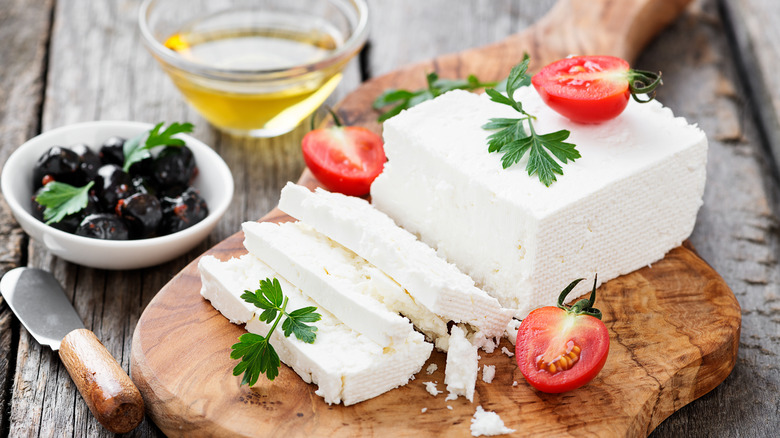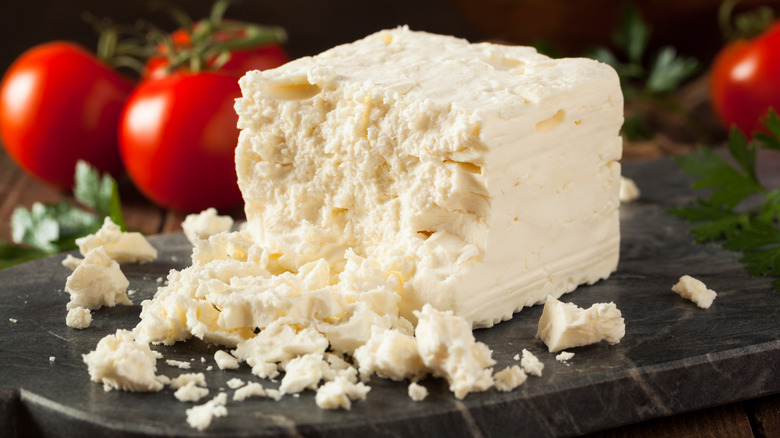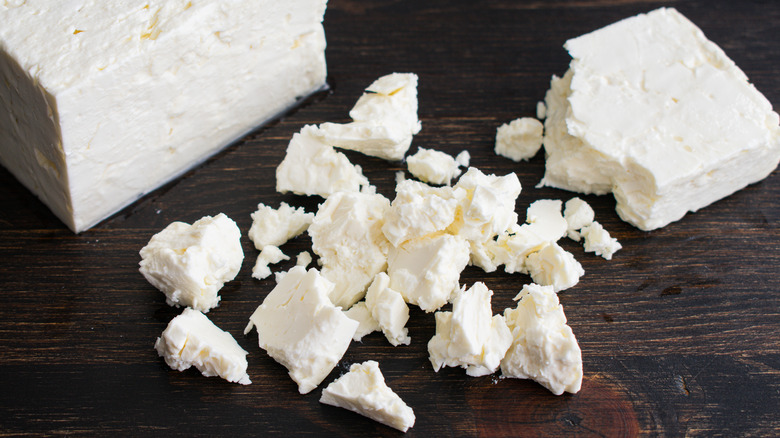The Difference Between Greek And French Feta Cheese
Americans love cheese. Surprisingly (or maybe unsurprisingly, depending on whether you're a cheese lover), the average American consumes more than 40 pounds of cheese per year, according to Statista. Plus, that number has only grown over the last two decades, up from 32% in 2000.
Food is symbolic of culture, and cheese is no exception; around the world, the techniques for developing different cheeses are nothing short of fascinating — from a 10-year aged cheddar to a daily-made mozzarella. Sheep, goat, and cow milk all create vastly different flavors as well.
Some cultures prepare the same types of cheese differently. Feta cheese, for example, has different techniques depending on where it comes from. Most people know it as a Greek cheese with a soft, crumbly texture, traditionally made from sheep's milk. But French feta exists, too, and it's not what you think when you picture feta; it has a much milder flavor than the Greek version, and it can be made using a different type of milk.
What is Greek feta?
Greek feta is the feta you're likely the most familiar with. It's the most popular feta in the grocery store's cheese section, and according to Bon Appétit, its crumbly texture sets it apart from its French counterpart. Out of the different types of feta, Greek feta packs the most punch with its flavor; its salty profile and borderline sour aftertaste make it hard to mistake it for any other type of cheese.
When it comes to buying Greek feta, Martha Stewart says to look for the PDO sticker (the Protected Designation of Origin). This red and yellow label ensures that the feta you're purchasing actually came from Greece and contains the ingredients that it's supposed to have; it also guarantees that the animals involved in its production (primarily made from sheep's milk and occasionally goat's milk) were fed a local diet. Greek feta is popular in dishes such as salads and pastas; it's an easy way to add a hint of salt.
What is French feta?
French feta differs from Greek in its texture, flavor, and sometimes milk. Bon Appétit reports that this type of feta has a milder flavor; it can be made with sheep's and goat's milk (though it's not to be confused with goat cheese) but is also made with cow's milk, which could explain the different flavor profiles. French feta has an overall creamier texture than the crumblier Greek style, so it is easier to whip than Greek feta. This makes it more spreadable and better for use with crackers.
When shopping for feta at the grocery store, make sure to check the label to know whether you're purchasing Greek or French cheese. Président is one popular store-bought French feta brand, which comes pre-crumbled and in block form, and a popular Greek brand is Mt. Vikos, which is discernible because of its PDO seal.
There is one important similarity, and that is in how to store the cheese. In both cases, storing feta in brine or oil will prevent the cheese from drying out quickly (per Food Preserving).


